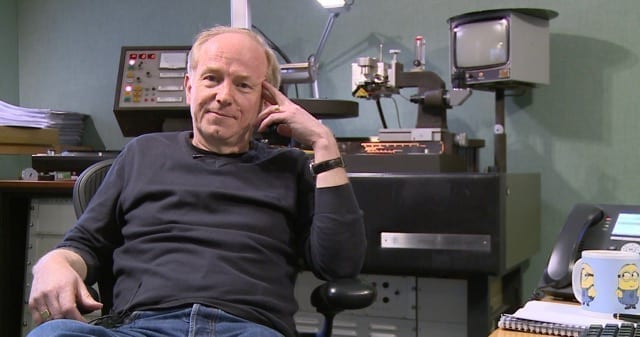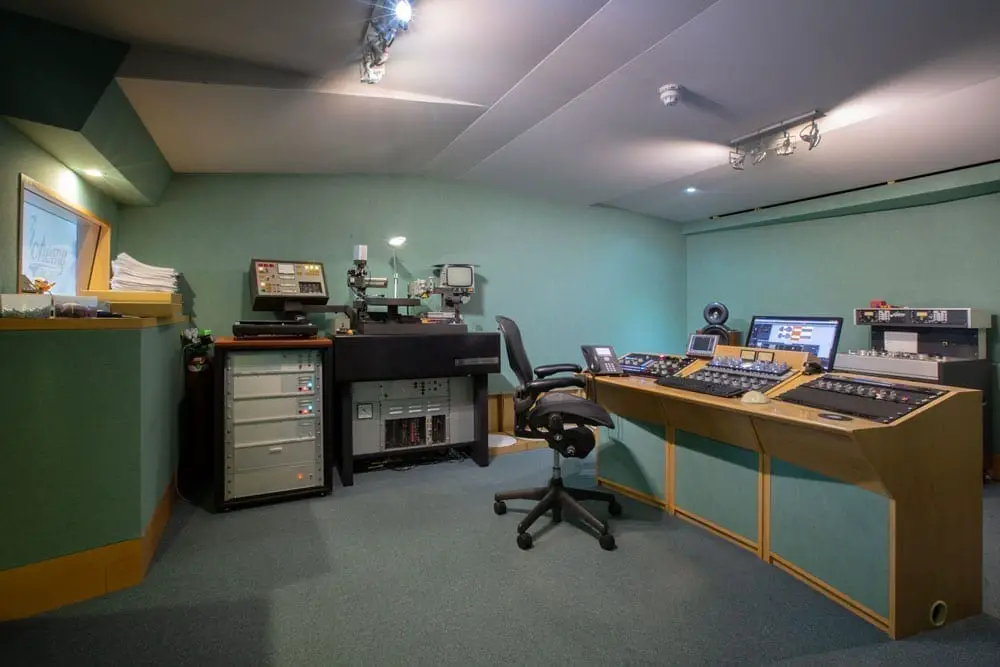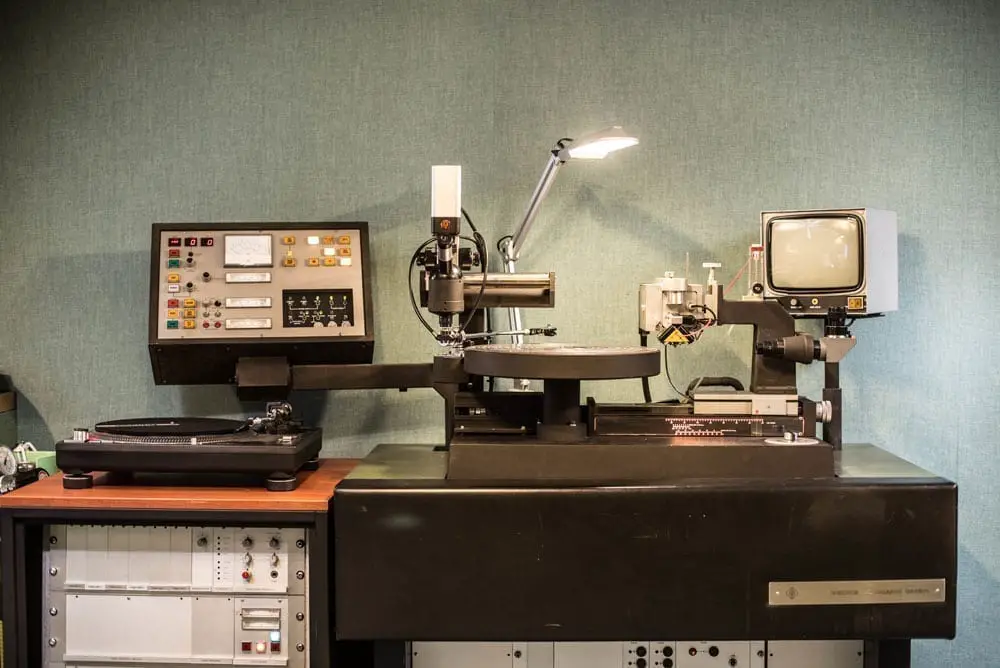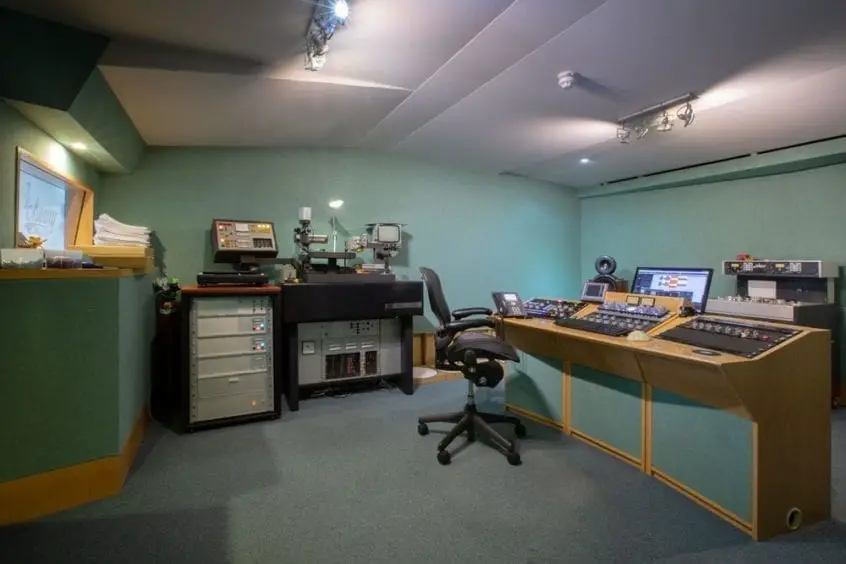When it comes to producing and releasing a vinyl record, much of the final outcome hangs on the mastering process. During this final polishing stage, a great mix can either be sent to the stratosphere or drowned in a ditch (figuratively speaking). Any mastering engineer worth one’s salt will take a great deal of care in ensuring the hard work of the musicians, producer, and engineer is showcased in the best possible light.

To learn more, and tackle some common misconceptions, we spoke to the founder of Alchemy Mastering, Barry Grint. Barry started Alchemy having previously worked at Abbey Road (among other big names). The interview you’re about to read takes place in that great British institution, the pub. Many a great idea or plan was hatched in a pub, and this one has a project recording studio above it, so the vibe feels right. The studio, owned by the Editor of Headliner Magazine, Paul Watson is affectionately referred to as “The Hub” and is housed inside The Boot in St Albans, Hertfordshire, England (built c1500 A.D).
“Vinyl is a very musical medium, music that sounds good cuts well.”
It’s close to Christmas time, and there’s a festive atmosphere about the place. The bar is packed, so we begin our chat at the bar while ordering a couple of pints. Barry has worked on some of my favorite records (including the first single I ever purchased: Oasis – Whatever), so it’s a pleasure to share a beer with him and talk music.
While we’re waiting to be served, Barry tells me a little about Alchemy Mastering and what they’re all about.
“Alchemy has been in existence for over 21 years”, Barry states. “Phil Kinrade and I have about 71 years of experience between us, and we have recently been joined by Kevin Tuffy, who has been a mastering engineer for quite a while, but wanted to learn to master vinyl. I have worked at Trident Studios, Tape One, Porky’s Mastering, and Abbey Road before founding Alchemy. Phil has been with DJM studios, The Sound Basement and Chop ’em Out before joining Alchemy. Kevin carried out tape archiving at In-flight facilities and had his own studio, called EAB.
“As well as the obvious gear such as Eq’s and compressors, we have invested in key items of equipment such as mains electricity treatment, digital clocking, refurbishing the cutting amplifiers, and custom modifications to allow us to carry out half-speed cutting. These things don’t just make a difference to vinyl, they impact on everything we do.”
Barry has a lot of experience, and as we settle down to our table, I’m keen to hear more about what makes a great record. Mastering is often seen as a “dark art”, and just like musical taste, an element of mastering will always be subjective. However, I can’t resist the simplest of questions and quickly ask what he thinks makes for a good master.
“The simple answer, I think, is a master that presents the track in the best possible light,” he reveals. “When it comes to vinyl specifically, there are a few specifics that should be considered. Vinyl is a very musical medium, music that sounds good cuts well. Sibilance, transient information—such as with pianos—can be a problem. Mono information makes the groove move sideways, whereas stereo information results in a groove that becomes deeper or shallower. Usually, this isn’t a problem as we have tools we can use to manage stereo bass.”
Quickly, it becomes clear from Barry’s answer that producing a record requires more consideration than merely taking the final recording, and applying it to the vinyl medium, as Barry continues to explain. “Vinyl side times should be considered too. For example, a 29-minute album side will be much quieter than a 7 minute 12″, because the pitch of the spiral has to be tighter for an album, leaving less room for groove movement.”
“…some of the very heavily limited tracks have so little dynamic range, they sound quite flat and nothing has room to give punch and excitement.”
Naturally, having established that much needs to be considered in making a mix shine, the natural follow up question is: what makes a master “bad”? Most readers will be aware of the “loudness war” and some of the overzealous mastering tactics used in some modern productions. Barry was quick to declare that, “some of the very heavily limited tracks have so little dynamic range, they sound quite flat and nothing has room to give punch and excitement.” No surprises there then!
Having experienced a few pressings that sound flat and dull in the past (often newly pressed records, in fact), I ask if any other faults can result in a flat and dull sounding record. “There are several reasons why a pressing might sound ‘dull’, from the cutting amplifiers being a little tired and requiring some TLC, to over-polishing (dehorning) at the record factory. I would like to think that most of these instances are picked up before the record is released.”

Mastering Suite at Alchemy, London
Vinyl enthusiasts often seek out pressings cut from the original master tapes. So I couldn’t end the conversation without addressing the thorny question about source material for eventual pressing. I asked, quite plainly, if records pressed from a digital source are inferior to those sourced from analog tape. The whole analog vs digital debate can get quite tiresome, but it’s a very common question from Sound Matters readers, so I had to ask!
Barry was kind enough to give us his take on the matter: “The fundamental here is that it depends on how well the engineering has been done.
“Warner Records, for example, go to extraordinary lengths to digitize their analog masters. They seek out the best possible copy, are meticulous in the transfer to 24bit 192 KHz, and make copious quality control notes. There is every opportunity for a mastering engineer to deliver this audio to a higher standard than was possible before. Alternatively, I have heard records cut pure analog where the audio is mono, yet there is a drop out on one channel.
“Then there are vinyl records cut from heavily compressed digital masters, which just sound diminished on vinyl rather than open, dynamic and loud, as truly stunning records cut from analog masters with breathtaking quality can be.”
“I think that it is fair to say that the bulk of records from the mid-80s onward were cut with a digital delay. That doesn’t mean they are in any way inferior…”
Closely related to this topic, of course, is the claim that all records pressed since around the mid-80s are cut using a digital delay for pre-listening. There is much confusion over this topic.
“I think that it is fair to say that the bulk of records from the mid-80s onward were cut with a digital delay. That doesn’t mean they are in any way inferior, because if the mastering community believed that to be the case, they would not have used them. If you listen to an album such as Graceland by Paul Simon, for example, it is a beautiful sound, with the vinyl cut using a delay.”
Clearly, there must be some advantages to using a digital delay, as Barry hints, so I then ask him to embellish further on the topic.
“Well, nowadays the bulk of cutting is done from digital files, so the alternative would be to convert to analog, record the audio to tape, move the recorded tape to another special tape machine that can create the pre-view signal and then cut.
“The process we actually use is to create a pre-view signal within the digital workstation by duplicating the audio and delaying one copy. Both the signal to be cut and the pre-view are passed through high-quality digital to analog converters and then to the cutting chain.”

By this point, I begin to explain some of the quality issues many of our reader’s experience, be it poor sound, off-center pressings, or bubbles on the record surface, for example. What follows will be music to the ears of anyone frustrated with quality control across the industry.
“The RIAA have a working group looking to put together a standards document covering all aspects of record manufacture in terms of quality of pressing, printing, and becoming more environmentally friendly. However, the manufacture of records is a very organic process, and all factories cycle through peaks and troughs of quality. That doesn’t mean that suddenly the quality is disastrous, but that they work within a tolerance.”
It’s refreshing to hear the industry talk about quality, and to attempt some documentation of standards. After all, we can talk about and celebrate the rise and rise of record sales all we like, but if we don’t uphold a high standard of quality, it’ll only be a matter of time before consumers vote with their feet. I think we can all certainly raise a glass to that!





[…] standards to secure a bright future for vinyl records as demand continues to grow. In a recent interview with mastering engineer Barry Grint, he revealed a promising development supporting quality control. “The RIAA have a working […]
Enjoyed the read. Particularly like the question about the quality of digital. Interestingly, the digitised output of the vinyl record captures the warm nature associated with vinyl. I remember transcribing Carley Simon’s No Secrets to digital for my personal backup and the transfer kept that vinyl sound. I always felt that this 1972 vinyl cut made a quantum leap in sound quality, later to find out from somewhere that it had received a nomination to best engineered. Interesting read on its production in Wikipedia.
Thanks for reading, Daniel. Glad you enjoyed it. Yes, digital gets a bad wrap. And while it’s true that a lot of digital masters are over-compressed, none of this is because of digital per se. Thanks for sharing the Carley Simon story, will check it out.
Nice article for better understanding of mastering. The text colour of your article cannot be any paler. Barely readable. 🙁
Thanks for reading, Gyorgy. I’m glad you enjoyed the article.
The text issue could vary from screen-to-screen. You are the second person to raise that, though, so I may look at changing the contrast to accommodate situations where it might be an issue. Happy spinning.